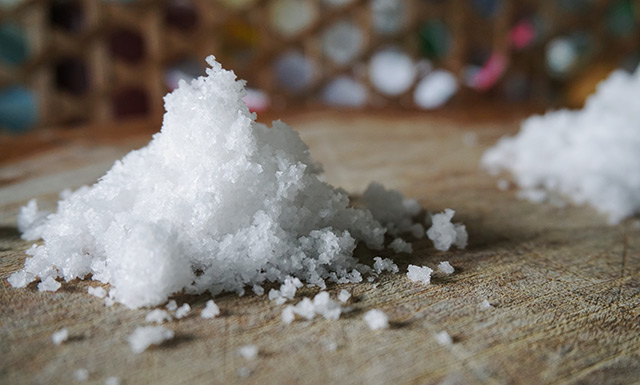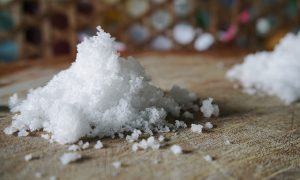
Ammonium Persulfate — toxicity, side effects, diseases and environmental impacts
Wednesday, November 29, 2017 by Rita Winters
http://www.naturalpedia.com/ammonium-persulfate-toxicity-side-effects-diseases-and-environmental-impacts.html

Ammonium persulfate is the product of ammonium metasulphate and hydrogen peroxide. It is a bread enhancer as well as a component of hair coloring and bleaching products. Ammonium persulfate occurs as colorless crystals or white crystalline powders. It is a strong oxidizing agent and may intensify fires, but is not combustible or flammable by itself. Fires that consume ammonium persulfate may produce fumes like nitrogen and sulfuric acid which are irritating to the human respiratory system. It is a health hazard, and must not be ingested, inhaled, or contacted on the skin and eyes.
Other names for ammonium persulfate include diammonium peroxodisulphate; APS; diammonium O-[(sulfonatoperoxy)sulfonyl]oxidanidolate; Peroxydisulfuric acid; 7727-54-0; EINECS 231-786-5; and Peroxydisulfuric acid (((HO)S(O)2)2O2), ammonium salt (1:2).

List of known side effects
Exposure to ammonium persulfate may produce a variety of cutaneous and respiratory side effects including allergic eczematous contact dermatitis, irritant dermatitis, localized edema (swelling), generalized urticaria (hives), rhinitis (inflammation of the mucus membrane), asthma, and syncope (temporary loss of consciousness).
Ammonium persulfate in hair coloring preparations and bleaches may result in severe reactions like burning sensations, dizziness, and weakness.
Body systems affected by ammonium persulfate
Ammonium persulfate poisoning targets the lungs, liver, stomach, and spleen. It may also damage mucus membranes and the gastrointestinal tract.
Items that may contain ammonium persulfate
Ammonium persulfate is used to strengthen flour, thus, most breads may contain this toxic chemical. It is produced from ammonium metasulphate and hydrogen peroxide, the latter used in bleaching agents. Therefore, hair and other personal care products may contain ammonium persulfate.
It may also exist in adhesives and sealants, paper products, and plastic and rubber products.
How to avoid ammonium persulfate
Ammonium persulfate as a crystalline powder may be easily blown by air. Airborne dust particles may irritate the eyes, nose, throat, lungs, and skin on contact. It is known to cause asthmatic effects in women. Avoid using products that contain ammonium persulfate. These may be in hair coloring or hair bleaching preparations and other personal care products. Always read the label prior to using a product.
Flour may contain ammonium persulfate because it is a strengthening agent. Bread that contains flour may have remnants of ammonium persulfate and must be avoided. Other products that are bleached or treated with ammonium persulfate must also be avoided to decrease the risk of contamination or intoxication.
In case of inhalation, move the victim to fresh air. Eyes and skin that are contaminated with ammonium persulfate must be wash or flushed with clean water. Accidental ingestion of the pure compound must be washed with one to two glasses of water.
Always clean up ammonium persulfate spills immediately. Wear protective gear such as chemical gloves, boots, coveralls, glasses or goggles and head respirators. For fire, extinguish with large quantities of water, and apply water as far a distance as possible. Do not use foams or dry chemicals to put out ammonium persulfate fires.
Ammonium persulfate storage areas must be locked. Prevent unauthorized and untrained personnel from entering storage locations. Do not allow soil or water bodies to be contaminated with ammonium persulfate.
Where to learn more
- Your Weekly Food-Like-Product – Lunchables Pt. 1 – Ham
- Poison.news
- Chemicals.news
- Pesticides.news
- Toxins.news
Summary
Ammonium persulfate is highly toxic to the cutaneous and respiratory systems of humans.
Sources include:
Tagged Under: Tags: ammonium persulfate





